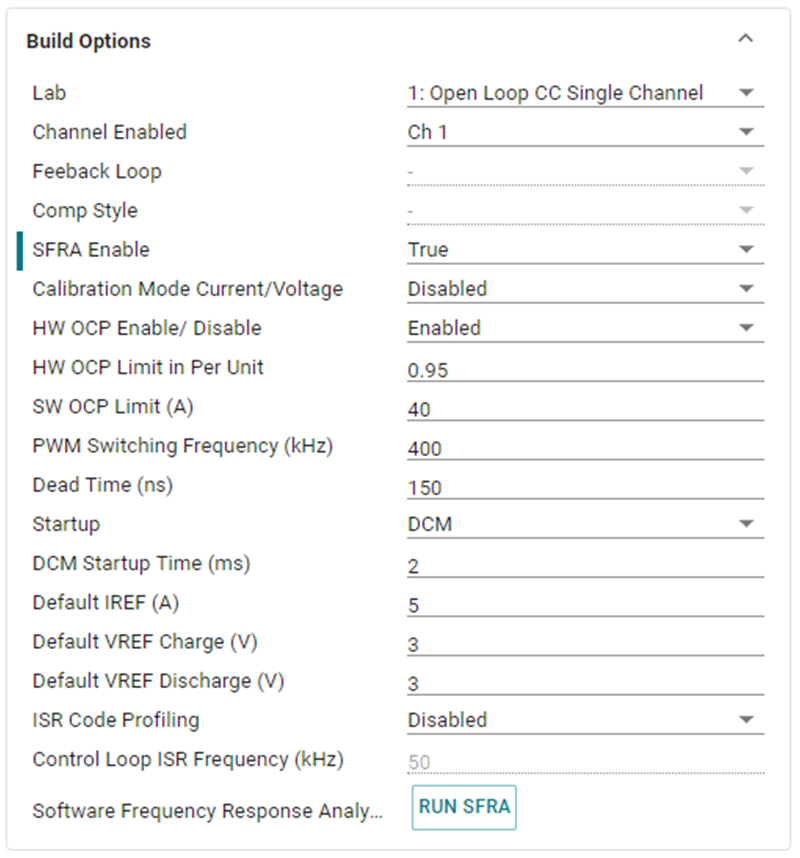TIDUF87 November 2024
- 1
- Description
- Resources
- Features
- Applications
- 6
- 1System Description
- 2System Overview
-
3Hardware, Software, Testing Requirements, and Test Results
- 3.1 Hardware Requirements
- 3.2 Software Requirements
- 3.3 Test Setup
- 3.4
Test Procedure
- 3.4.1 Lab Variables Definitions
- 3.4.2 Lab 1. Open-Loop Current Control Single Phase
- 3.4.3 Lab 2. Closed Loop Current Control Single Phase
- 3.4.4 Lab 3. Open Loop Voltage Control Single Channel
- 3.4.5 Lab 4. Closed Loop Current and Voltage Control Single Channel
- 3.4.6 Lab 5. Closed Loop Current and Voltage Control Four Channels
- 3.4.7 Calibration
- 3.5 Test Results
- 4Design and Documentation Support
- 5About the Author
3.4.2.1 Setting Software Options for Lab 1
- Open the CCS project as outlined in Section 3.2.1. If using the powerSUITE, go to Step 2; otherwise jump to Step 3.
- Open the SYSCONFIG page and
select under the Build Options section:
- Select Lab 1: Open Loop CC Single Channel for the Lab
- Select any of the four channels
- Enable the SFRA
- Save the page
- When using the non-powerSuite
version of the project, the above settings are directly modified in the
solution_settings.hfile.#define LAB_NUMBER (1) #define CHANNEL_NUMBER (1) #define SFRA_ENABLED (true)
 Figure 3-12 Build Options for Lab
1
Figure 3-12 Build Options for Lab
1